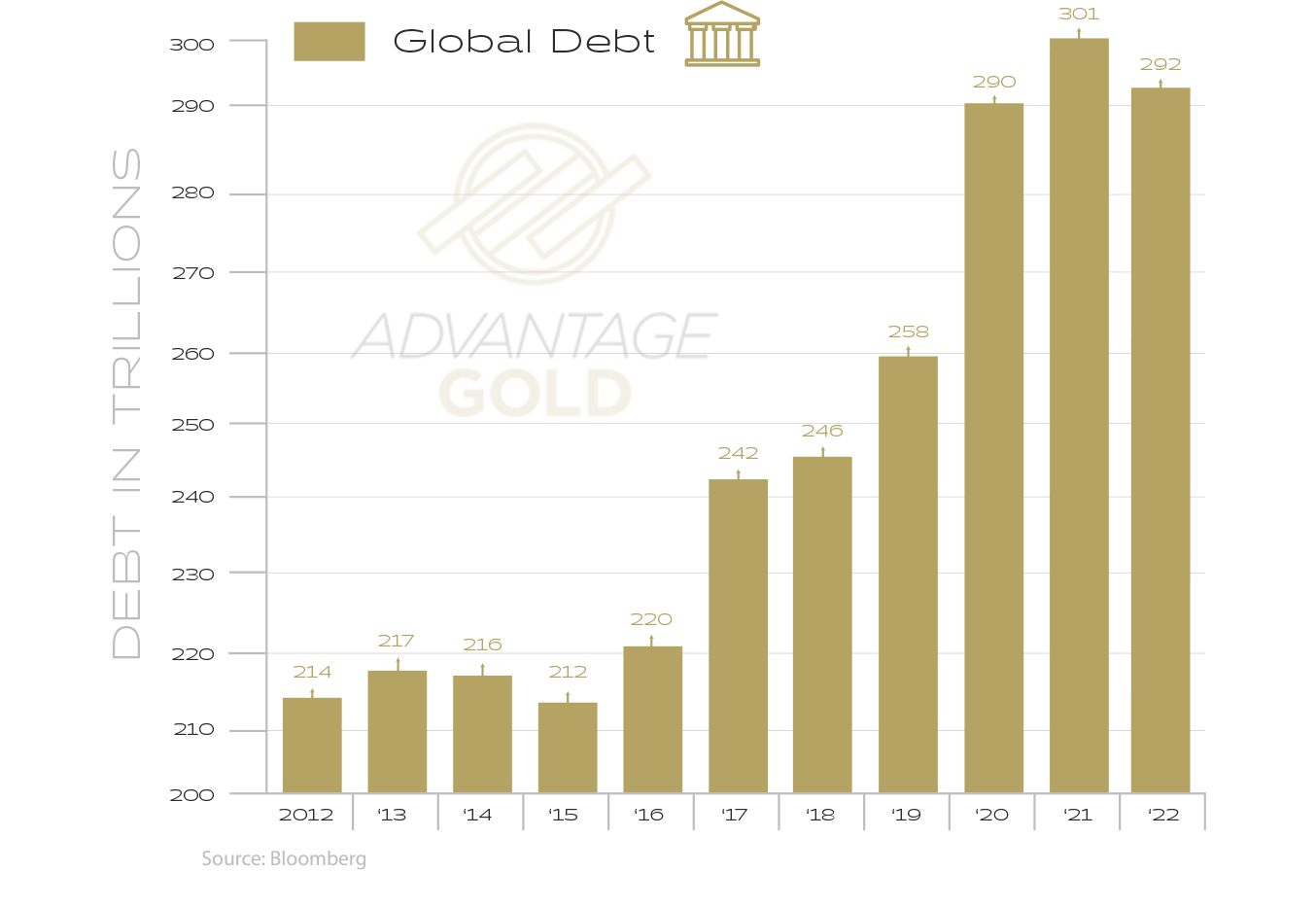
Global Government Debt
Over the last decade, global debt has reached historic levels, driven in part by a surge in borrowing by governments and corporations. According to the Institute of International Finance, global debt reached $301 trillion at the end of 2021, more than three times the size of the global economy. This represents an increase of around $100 trillion from the levels seen at the end of the 2008 financial crisis. While low-interest rates have made it easier for countries and companies to borrow money, there are concerns that this buildup of debt could pose risks to financial stability and economic growth in the future. High debt levels can lead to higher interest rates, which can put a strain on households, businesses, and governments alike. In addition, there are concerns that the pandemic has made it harder for many countries to manage their debt loads, particularly in the developing world, where many countries are struggling to cope with the economic fallout from the pandemic. Addressing the challenge of global debt will require a coordinated effort from policymakers, investors, and other stakeholders to ensure that debt remains sustainable and does not threaten global economic stability.



